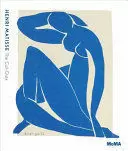
FRIEDMAN, SAMANTHA
With their economy of means and chromatic geometries, Matisse's cut-outs are the apex of his "construction by means of color"Published in conjunction with the most comprehensive exhibition ever devoted to Henri Matisse's paper cut-outs, made from the early 1940s until the artist's death in 1954, this publication presents approximately 150 works in a groundbreaking reassessment of Matisse's colorful and innovative final chapter. The result of research conducted on two fronts--conservation and curatorial--the catalogue offers a reconsideration of the cut-outs by exploring a host of technical and conceptual issues: the artist's methods and materials and the role and function of the works in his practice; their economy of means and exploitation of decorative strategies; their environmental aspects; and their double lives, first as contingent and mutable in the studio and ultimately made permanent, a transformation accomplished via mounting and framing. Richly illustrated to present the cut-outs in all of their vibrancy and luminosity, the book includes an introduction and a conservation essay that consider the cut-outs from new theoretical and technical perspectives, and five thematic essays, each focusing on a different moment in the development of the cut-out practice, that provide a chronicle of this radical medium's unfolding, and period photographs that show the works in process in Matisse's studio. One of modern art's towering figures, Henri Matisse (1869-1954) was a painter, draftsman, sculptor and printmaker before turning to paper cut-outs in the 1940s. From the clashing hues of his Fauvist works made in the South of France in 1904-05, to the harmonies of his Nice interiors from the 1920s, to this brilliant final chapter, Matisse followed a career-long path that he described as "construction by means of color."